► New C3 launching early 2024
► Pure electric for just €25,000
► Part of new strategy targeting Dacia
Want affordable mobility, transparent pricing and a simple range eschewing excessive tech? Then you should be considering a new Citroën, vows new CEO Thierry Koskas – though you’d be forgiven for thinking he was talking about budget brand Dacia from crosstown rival Renault Group.
Dacia has been making remarkable strides – one in every six cars retailed in France is a Dacia, and its European market share is growing. In 2022, Dacia sold 573,800 vehicles – compared with 700,000 Citroëns worldwide. Though the new Citroën regime is targeting 1 million vehicles a year, which would better reflect a brand whose overarching core value is now defined as ‘popular’.
 New Citroën brand CEO Thierry Koskas
New Citroën brand CEO Thierry Koskas
Citroën’s lacklustre commercial performance has triggered a change at the top, with sales and marketing expert Koskas replacing the cerebral Vincent Cobee. The former Nissan exec very much conceived Citroën as an affordable mobility brand, introducing the Ami urban mobility pod, the keenly priced C5 X flagship crossover and did the spadework for the next new Citroën, the replacement C3.
 Citroën Ami urban mobility pod
Citroën Ami urban mobility pod
‘Vincent did a great job to prepare all the products,’ Thierry Koskas tells CAR. ‘But now we need to have [the] sales and marketing side push the brand and that’s what I know how to do.’
New electric C3: a rival for Dacia’s Spring?
The all-new C3 supermini ‘will reinvent the affordable electric car’ when it launches in early 2024, pledges Koskas. ‘It will cost below €25,000 although with all the features you expect. There’s no [such] offer on the market today and there won’t be when we launch the car. It will be a breakthrough in the market.’
Well, yes and no. The Dacia Spring is Europe’s most affordable electric car, costing just €15,800 (after a €5k eco subsidy) in France, and destined for the UK in 2024. But the 3.7m-long e-SUV is about 300mm shorter than the new C3 and it doesn’t have lane assist or automated braking for pedestrians, systems Citroën is unlikely to overlook.
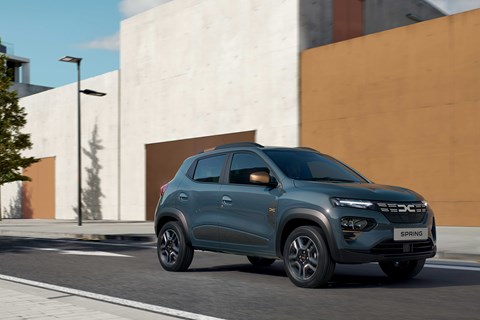 Dacia Spring Extreme electric car
Dacia Spring Extreme electric car
Even more pertinently the Spring comes with a 220km (137-mile) range; Koskas promises the new C3 will travel 300km (186 miles). Also Citroën pointedly states that the new C3 will be assembled in the European Union whereas the Spring is made in China.
Simplification to slash product costs
While the two EVs diverge on product specifics, their umbrella brands’ philosophies have much more in common.
Citroën is squeezing cost out of its products, crucial for its role spearheading Stellantis’ French push in the Indian and South American markets. It is rolling out two new models, the C3 and C3 Aircross, which have a different exterior design and interior to the new European C3 but do share components with it, helping boost scale and drive down costs.
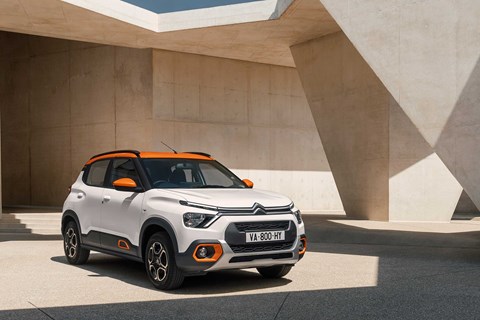 Citroën C3 for India and South America
Citroën C3 for India and South America
Dacia’s platform, assembled by low-cost labour in Morocco and Romania, is scaled across all its models (and shared with Renaults too). Its approach of not offering electric-adjustable seats and getting customers to bring connected features into the car using their smartphones chimes with Citroën’s thinking.
Citroën’s Oli concept car shows this next-gen approach, with ultra-thin three-part seats to save weight and cost, as does using a smartphone instead of built-in infotainment with navigation.
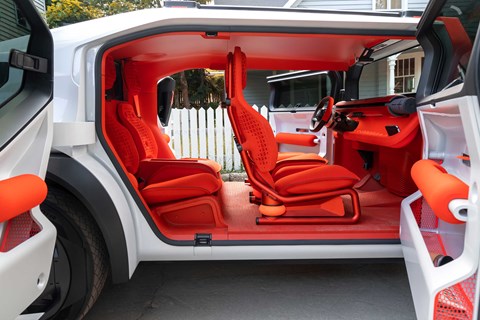 Citroën Oli cockpit
Citroën Oli cockpit
Another initiative lifted straight from the Dacia playbook is to reduce manufacturing complexity by eliminating model variations. ‘We will have a simple offer,’ says Koskas, ‘with only three versions in every car line, each with a maximum of five options.’ Simplicity is a key pillar of new Citroën, says the CEO.
Expect fair pricing and more daring
With online sales requiring set pricing and Mercedes-Benz transforming its dealers into handling agents, the trend is for opaque transaction prices to become clearer. Citroën UK grasped the nettle in 2020 by dropping some list prices to reduce the grey area of negotiation, in a push it called fair pricing.
‘It’s a great move we will go further on,’ says the new CEO. ‘We will have a catalogue price which is not far away from the transaction price and customers will no longer be lost in “how much do I pay?”’
Today’s C3 You model costs £13,995 in the UK, only £200 more expensive than the entry-level Dacia Sandero.
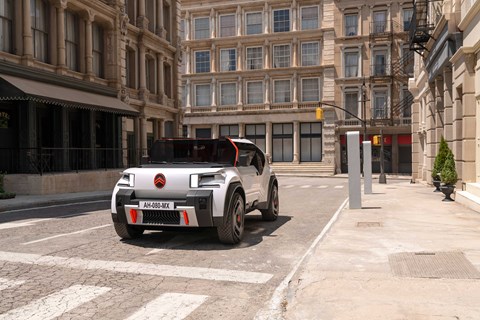 Citroën Oli Concept front
Citroën Oli Concept front
And like Dacia, Citroën is promising to embrace sustainable materials, as evidenced by the Oli concept – which Koskas believes represents Citroën’s daring side. ‘The Oli goes 180 degrees to industry trends of bigger battery, more technology; with Oli we go light, battery at the right level. We go on very simple products with everything visible, necessary tech. These are the simple values of the Citroën brand,’ says Koskas.
And Dacia, it must be said.
Thierry Koskas on Dacia vs Citroën
Koskas became CEO in February 2023, and today announces his strategy – Citroën being a popular brand supported by the four pillars of comfort (a long-standing Citroën non-negotiable), simplicity, sustainability and daring.
So is Citroën Stellantis Group’s Dacia fighter, Car asks Thierry Koskas? ‘We will be facing them on some products, for sure, with similar type of pricing and so on.
‘But the brand positioning is very different because we are covering all the segments, we do fleet and light commercial vehicles and they don’t. And we are going full electric and we have a brand that has a long, long history. So we can be facing them but we are not lookalike.
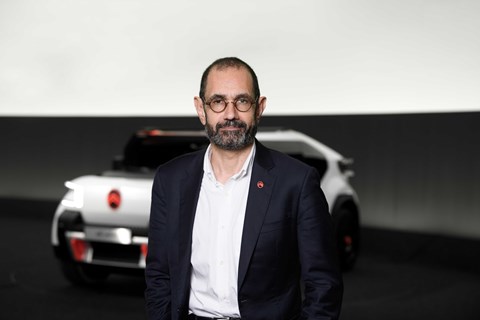
He concludes: ‘We are a popular brand not a low-cost brand, and it is our mission to make mobility accessible for everyone. And today mobility has to be electric.’
What do you think: is Citroën a budget brand – and should it be? Let us know in the comments below